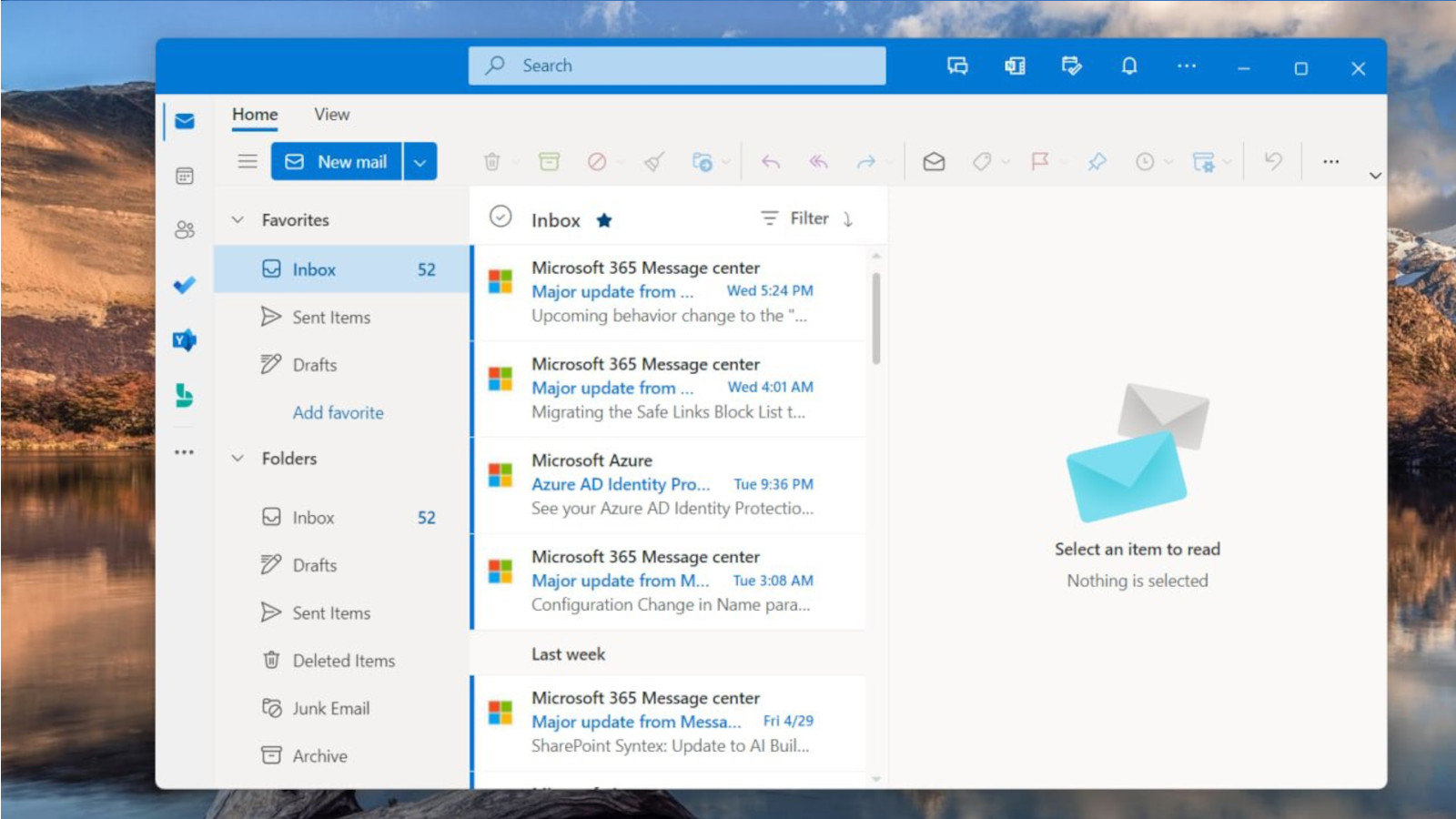Microsoft's One Outlook has leaked, but people already think it sucks
It's a tough crowd

It's been rumored that Microsoft has been developing One Outlook for some time, but a fresh leak suggests we're closer than ever to finally getting our hands on the all-in-one email client.
The leak was spotted by Temmie on Telegram and then posted to Twitter by @TomWarren , and looks visually very similar to the current Outlook Web service, with the exception of embedded window controls.
For those unaware, One Outlook (previously codenamed 'Project Monarch') will see Windows 11 applications like Outlook, Calendar and Contacts consolidated into a single app that works across PC, Mac and the web in order to replace its existing Outlook clients for desktop including Outlook Web, Outlook (Win32) for Windows, Outlook for Mac and Mail and Calendar on Windows 10.
This isn't actually the first time that One Outlook has leaked. A version of the app appeared last year, but wasn't accessible to anyone who worked outside of Microsoft, so this is the first version we've seen that works on work and education accounts.
Here is how One Outlook settings, peoples, new mail and calendar page#WIndows11 #FluentDesign #OneOutlook pic.twitter.com/mCO9MModgJMay 6, 2022
The new app doesn't appear to be working on personal Outlook accounts yet sadly, though those with access to an education or work account can give the beta version of One Outlook a whirl (clicking this link will download the setup installation file).
Microsoft has yet to announce when One Outlook will be officially rolled out to the public, but this leak does at least indicate that we might not have all that long to wait. Initial speculation projected that the app will be made available to Windows Insiders around April 2022 and then ready for a full release in Q3 later this year, so while no official release date has been provided, it would appear that things are still on track.
Analysis: Microsoft has some convincing to do

A unified system for the Outlook applications certainly makes sense, especially with so many people still using the older Windows 10 operating system, but that doesn't mean that everyone else is happy about it.
I've always personally hated using the integrated Mail app because of its clunky design, and I'm certainly not alone, but there's more to an email client than style.
While having everything in one place and with a consistent design could make life easier for those who use Outlook regularly, there are numerous comments on social media right now regarding memory consumption, as well as the service being web-based rather than system integrated which could cause issues for users with slow internet or bad connections.
Windows 11 has also been criticized for its reliance on web apps that cause slow performance and high RAM usage. Unfortunately for those who do rely on the current Mail application on Windows 10 or Windows 11, this might be phased out in the months following a full release of One Outlook, though I hope that a system-integrated option will remain.
It was previously stated by Microsoft that both the classic and new One Outlook apps will be available simultaneously to begin with to give users a chance to manage their switch over, and this certainly suggests that the two might not coexist forever.
With Microsoft relying so heavily on web apps for Windows 11, the OS is making less powerful devices feel like something closer to a bloated Chromebook than a step-up from Windows 10. With any luck, Microsoft remembers to start giving its native apps some love too rather than going all-in on web-based services.
Sign up to the TechRadar Pro newsletter to get all the top news, opinion, features and guidance your business needs to succeed!
Via Windows Central
Jess is a former TechRadar Computing writer, where she covered all aspects of Mac and PC hardware, including PC gaming and peripherals. She has been interviewed as an industry expert for the BBC, and while her educational background was in prosthetics and model-making, her true love is in tech and she has built numerous desktop computers over the last 10 years for gaming and content creation. Jess is now a journalist at The Verge.
